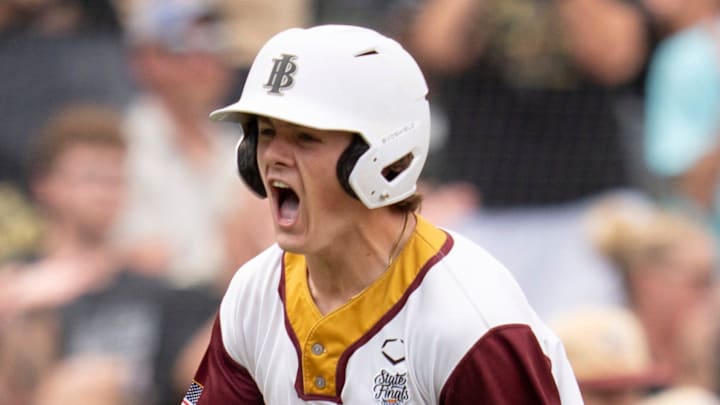NIL Gold Rush? College-Style Revenue Sharing and Direct Payments Are Still Off Limits for High School Athletes

The Rise of NIL: From College Compensation to High School Opportunity
Name, Image and Likeness (NIL) rights for athletes are on the rise and have forever blurred the lines between amateurism and professionalism in sports.
What began as a fight to compensate college athletes for their contributions to the enormous revenues their schools and conferences were generating from massive media rights and sponsorship deals, merchandise sales and licensing agreements, and sold out venues, has evolved into direct payments to athletes, fueled by all-out bidding wars for recruits and transfers who enjoy virtual and perpetual free agency.
The NCAA Settlement That Changed the Game
How NIL will be administered on the college level has been resolved, at least for now, following the final approval of a settlement, earlier this month, between the NCAA and lawyers representing members of three different class action lawsuits. The settlement allows schools to share as much as $20.5 million of their revenue with athletes and offer unlimited scholarships. It even set aside $2.8 billion to compensate eligible former college athletes, who did not have the benefit of NIL during their days as a student-athlete.
High School NIL Laws: Expanding Access, Varying by State
NIL rights have not stopped at the college level. The last four years have seen a steady movement towards NIL rights for high school athletes with 38 states and the District of Columbia establishing guidelines for high school athletes to benefit financially from their name, image and likeness. Four states – Indiana, Michigan, Montana and Ohio – are actively considering adopting similar guidelines, while only seven states prohibit NIL deals on the high school level.
States That Still Ban NIL Deals for High School Athletes
Those states include Alabama, Hawaii, South Carolina, Texas, West Virginia, Wisconsin and Wyoming. Texas, however, recently enacted legislation that would allow high school athletes as young as 17 to sign NIL deals with colleges recruiting their services, but those benefits cannot begin until after the athlete completes his/her high school career.
Some envision a day when financial rights, similar to those granted in the NCAA settlement, will reach the high school level.
Former California high school athlete Dominik Calhoun — now at Boise State — filed a federal class-action lawsuit (Calhoun v. CIF) in Northern California, late last month. He alleges that the California Interscholastic Federation and several media companies, including SBLive Sports, have unlawfully restricted high school athletes from profiting off their name, image, and likeness. The lawsuit claims CIF’s policies violate antitrust laws by barring athletes from receiving compensation tied to broadcast rights, sponsorships, and ticket sales. It also challenges CIF’s transfer rules, which limit athlete mobility and earning potential.
The Limits of High School NIL: No School Pay, No Recruiting Bonuses
One could never say never in the realm of sports and money, but it is unlikely high school athletes will ever receive the same NIL rewards of their college counterparts. For sure, some prep stars have inked endorsement deals for themselves but not one state has yet come close to allowing student-athletes to be paid directly by high schools or even be compensated for agreeing to attend a specific school.
Legal Expert Explains the Most Common NIL Restrictions
In a recent article for the National Law Review, Professor Robert J. Romano, JD, LL.M explained some of the restrictions that are generally part of guidelines in every state where NIL benefits for high school athletes are allowed.
"With no national standards regarding NIL, most of the states that do allow for monetization rest upon their high school athletics governing bodies to formulate any and all rules and regulations," wrote Professor Romano, who is an Associate Professor in the Division of Legal Studies at St. John's University, where he has taught courses in Sport Law, Sport History, Current Topics in Sport, and Public Policy Issues in the Sport Industry.. "This leads to a variation of standards between states, but there are a few key restrictions present in most of these rules that high school athletes should be aware of."
The Bottom Line: NIL Is Opportunity—But With Major Risks
Romano cited the following points as being most common:
- High school athletes typically may not refer to or include their school’s uniforms, logos, colors, or facilities of the state’s high school athletic association in their NIL activities.
- High school athletes are typically prohibited from partnering with gambling, alcohol, tobacco, weapons, firearms, ammunition, and other adult categories of brands.
"In those states where NIL opportunities are allowed, high school athletes have a chance for a significant financial windfall," added Romano, who played college football at Springfield College and, as a contract attorney, has negotiated employment contracts, public appearances, endorsement and sponsorship agreements for U.S. and international coaches, professional athletes, entertainers, broadcasters, and front office personnel. "However, athletes, their parents, and those advising them must ensure that any NIL agreement is in accordance with the applicable rules of their state, since non-compliance could lead to loss of eligibility to participate in athletic competition, which will certainly jeopardize any future athletic and financial opportunities."
manual
